Interview With Nipun In Heartfulness Magazine
[The blossoming connection between Heartfulness and ServiceSpace is treat to witness. During a visit to Kanha last year, Heartfulness Magazine did a spontaneous interview with Nipun, right after one his talks to 1500 meditation teachers. Part 1 of that interview was published in January, and Part 2 was just released. It looks particularly beautiful in the print edition. Below is are both of the transcripts combined. Hope you enjoy!]
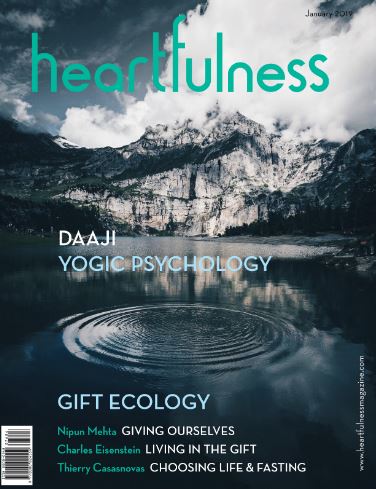
Q: Hi Nipun. Welcome.
NM: Hello. Happy to be here.
Q: Your whole focus with ServiceSpace, with Karma Kitchen, and all the other projects that you do is around service, seva, around volunteering. It is all about people sharing. What led you to this? How did it all start?
NM: I was on the journey of success, because that’s what everyone expected of you. I mean when you go to high school, you want to go to a good college. When you go to college, you want to join an even better graduation program or get a great job. Once you have a great job, you want a promotion. Once you get a promotion, another promotion. And I was from Silicon Valley. So it was no longer good enough to just work at a job; you are supposed to start a company. Then, you know, big cars, fancy houses, parties and things – it just seemed endless to me. It was the narrative of accumulation.
I remember in Silicon Valley, in the peak of the dotcom days, there was a billboard by one company that said, “He who dies with the most toys still dies.”
The dominant paradigm narrative of success rooted in accumulation just felt hollow. A part of me was saying: Maybe it’s not about acquiring a lot; maybe it’s about letting go. And I started to let go, bit by bit.
Initially I wanted to give my time. Actually, even before that we would all gather and collect five to ten dollars and say, “Hey, let’s give.” So I started in that way. Whatever I did I would always involve other people, as that was my tendency. As I gave money, I wanted to give more, so I started giving my time. As I gave time, I wanted to give even more. What could I give? I realized that at some point I just want to give myself.
And the reward was that I was changing myself through the process. I didn’t need any external validation. It wasn’t that I thought, “Oh, look at that, I’ve changed your life.” It was more that the act of generosity was just so transformative and regenerative that the more I gave the more I wanted to give. Love is truly a currency that never runs out. So I tapped into that spirit in myself, and that’s what has continued to propel me.
ServiceSpace was the outcome; it was kind of a ripple effect. We never started an organization: we didn’t know how. We didn’t want to change the world. It was all just this intent of serving to change ourselves, and through that process all these manifestations continued.
We were four people when we started ServiceSpace. It wasn’t even ServiceSpace at that time, just four of us trying to serve. And then, bit by bit, it rippled out. It’s been an amazing journey for me, and I would say that twenty years later I am still rooted in that same idea of ‘give to change myself’. As I do that I feel full of joy, and I just want to give more.
Q: This also resonates very much with some of the traditions in India. So is there something from your background, from your family? Or is this just a reaction against the Silicon Valley culture?
NM:I wouldn’t say it’s completely a reaction. That’s one parsing of it, and that was an influence, but since childhood I was a spiritual seeker – that’s what drove me. I would always go to the spiritual section of libraries and read books from all kinds of philosophical traditions, including esoteric books. Actually, I was fascinated with death; not fascinated, but there were all these question marks.
We build our lives around permanence. We build our identities and say, “This is who I am,” and that certainty is what gives us a kind of strength. And I had my doubts about that whole narrative. Maybe strength could actually come from impermanence? That I’m going to live and die, that I’m changing every moment, is not something to be upset about; it’s something to celebrate. This may be the last time we meet, which means that I should really treat this moment as a holy moment. It took time for me to understand impermanence, because initially there were all these question marks around it, but that helped me.
When I was 17, I went to a hospice and said, “I want to serve.” They said, “By law, you can’t do this at 17. You have to be at least 18.” Then, when I went at 18 they said, “Are you sure? Because you’re going to be with people who are passing away!”
As I served them it helped me prioritize: If you were to die tomorrow, what would you want to be doing today?
And we really don’t know how long we are going to stay. It’s not a switch. I saw that in the people I was with, in the people who would pass away. In their last days they wanted to turn on some switches, but they couldn’t. They wanted to be loving, they wanted to be forgiving, they wanted to be accepting, they wanted to be filled with joy and embrace impermanence, but they couldn’t. So I realized that it’s not a switch that I’m going to turn on at 65 when I retire. You have to do it now. So for me, that ‘nowness’ was very present through that whole process.
Q: You said you read spiritual literature when you were younger. Who inspired you the most?
NM: Lots of people! I read J. Krishnamurti in my teens, and I love everything he says. He says, “Look, truth is a pathless land.” You can only draw a path between two static points, and truth is constantly changing – it’s emergent, not static. So you can never have a path to truth; you have to live into the truth of each moment. And that just resonated deeply. He was a big inspiration.
At the level of action, Gandhi was a big inspiration for me because I saw him bridge inner transformation with outer service. He was doing this great work in the world, but his journey was really to connect the inner with the outer. You repeatedly saw that in his life. And I thought, “Wow! He didn’t just meditate to be awakened, he didn’t just leave everything. He stayed in that dirty pond to give birth to that lotus and set a remarkable example of the possibility of love for the whole world.”
So they were two of my heroes as I was growing up, and they still are.

Q: So out of all this you developed a Gift Ecology. Can you describe it for us?
NM: I’m very inspired by small acts of kindness, small acts of service, because they change us. And what is of paramount importance is that they change us on the inside. So when we do small acts it’s wonderful, but when those small acts get connected, they really start to create a collective force around them. It changes the way in which we behave with each other.
Imagine I’m giving you a shoulder rub, and you are giving a shoulder rub to somebody in front of you, and that person is giving a shoulder rub to somebody in front of them. And if we’re all in a circle, what goes around comes around, right? It isn’t quid pro quo. I do something for you in a certain way, and maybe the person behind me is doing it in a different way for me. So it’s not that I gave this much and I expect this much back. I’m receiving and I’m paying forward with gratitude. If we let go of that transaction in a one-to-one way, what we get is a circle. It’s a shift from direct reciprocity, which is, “I gave you this so you give me this in return,” to indirect reciprocity. And when we engage in indirect reciprocity what we gain are relationships. That’s becomes a gift ecology – a field of myriad relationships of generosity. In such a field, everyone behaves differently, and our shared experiences lead to entirely different outcomes.
Q: Can you tell us how this works in some of your organizations, say in Karma Kitchen?
NM: I think Karma Kitchen is a great way to understand it. You walk into this restaurant and your check reads ‘zero’. It’s zero because someone before you has paid for you, and you are trusted to pay forward whatever you want for people after you. Will you pay forward? How much will you pay forward? How much is something worth that doesn’t have a price tag? What is your relationship to the priceless? In today’s culture we do not even have spaces, physical or even internal, to ask such questions. Most of us are just busy looking for price tags, and that’s how we determine value.
But here is a space where we change the rules of the game. We trust that we are intrinsically wired to want to connect, to expand in our empathy and to ultimately tap into our compassion, which is what a space like Karma Kitchen does. Because when I receive it, the first thing is, “Wow, I’ve received something from somebody I don’t know!”
So there is a sense of gratitude, and then from that gratitude we are paying forward to those after us. And that person will never be able to say “Thank you” back. So there’s a trust, an expansion that happens, and if that is resonant, we say, “Hey, I want to come again.” If that lands, we say, “Hey, the meal’s market value might be $5 or $10, but I want to leave $20,” because we are moved in that way. And this kind of mindset can be applied to anything and any place where there is transaction. You can run a rickshaw in India this way, you can run magazines this way, you can run Yoga studios this way, you can run medical clinics this way. So many ServiceSpace members have done all that, and it’s been amazing to see.
Q: What are some of the reactions when people discover this feeling? What is it like to be part of this culture?
NM: The most spontaneous response that you see every so often is that someone walks into Karma Kitchen and is just moved to tears. They may not have the faintest idea about the space, but a short explanation is given to them at the door. Then they come and they are held with love, they are served by volunteers. It moves people. In such a context, different kinds of intelligence are awakened. People say things like, “Hey, you know what? I’m going to pay forward and do 21 kindness acts for strangers over the next 21 days, because this is the kind of world I want to see: where we see the good in people, where we value cooperation, where we’re connected.”
As a society I think one of our biggest problems right now is that we’re disconnected. We’re disconnected with ourselves, we’re disconnected socially, and we’re disconnected systemically. So how do we start to reconnect? That disconnection is very, very costly to society because trust is plummeting by all metrics. No one knows how to solve this problem, because there is no quick fix to trust. It takes many decades to destroy trust, which we have done, and now it’s going to take many decades to build it up. Unfortunately all our systems are skewed towards very quick feedback loops, so we aren’t able to solve this problem. People don’t even trust themselves now, let alone each other and systems.
How do we bring this kind of a capital into greater circulation in our world, so we can increase trust and reconnect with each other? I think generosity is a phenomenal tool to help us to do that.
Q: So do you think that’s why there are are high levels of depression and anxiety today, because of a lack of connection?
NM: Yes, that’s certainly a big part. Technology promises a lot of things. Facebook is supposed to connect us, but actually it has just cheapened our connections. When I was growing up, I would call my friend on the phone. His mom would pick up, and then I would get to know her too. At graduation you meet the parents of your fellow students. It was a much more multi-dimensional engagement. Now you just post some Happy Birthday message on the wall, and it’s almost a chore.
We do have many loose ties in today’s culture, but we have lost the deep ties. The Internet has been great for creating many loose ties across broader boundaries, many traditional boundaries. It’s great, it’s not all bad, but we have lost this capacity for deep ties and deep friendships. As a result we feel alone and that’s leading to many upstream problems.
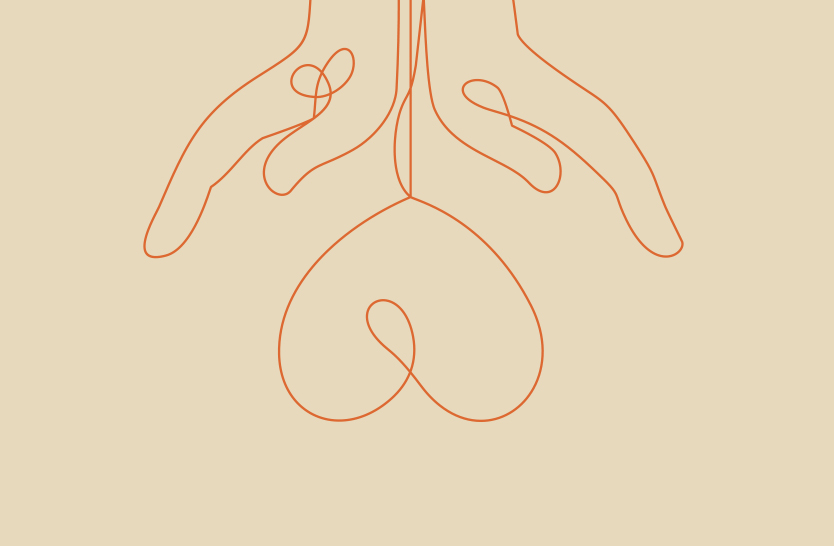
Q: The gift ecology must have a gifting ecosystem associated with it. What does that look like? For example, the people who work in Karma Kitchen, and the way the whole things evolves. Tell us about the continuity.
NM: The Buddha said something very profound: “This is a very long path of awakening. On this very long path there is one key resource that you need.”
His attendant, Anand, asked, “You speak a lot about this idea of noble friends. It seems like half of the path is just noble friends.”
And Buddha said to him, “No, Anand, it’s not half of the path. It’s the full path.”
So many times, we tend to see the things we do in isolation. We live in a monoculture world.
You look at a farm and say, “What are you growing?” And the cheap easy answer, if you don’t have attention, if you want to sound bite everything, is that you say, “I just grow apples.”
But actually how do we shift to a polyculture farm where we do have apples and we also have plums and peaches? It’s not so easy to just say this or that, it’s not binary, it’s actually multidimensional.
So many people will speak about a gift economy, but in ServiceSpace, we prefer gift ecology, because ecology is a deeper web with many nodes engaging with many other nodes. It’s more of a polyculture, and in a polyculture of relationships, you have incredible resiliency. And in that resiliency, virtues like generosity and kindness and compassion grow. Such virtues cannot be manufactured in a factory, they have to be gardened. But to grow them, you first need to have that field.
The allure of manufacturing is that you have a recipe: you start here, you apply the recipe, and you take it to scale in a certain predictable period of time. But how to shift from that monoculture mindset to polyculture mindset, and move from manufacturing to gardening? With gardening, you do your work but then you can’t say, “Let’s bring the tomatoes on Wednesday.” Tomatoes will arise when the time ripens.
How do we move from that predictability to emergence? Once we understand that virtues grow in a field, we can say, “What are the core elements of the social field?” And that’s relationships. So if we have polycultural relationships, we can grow compassion, we can grow generosity, we can grow kindness. If we don’t have those multi-dimensional relationships, we will not be able to put these things in circulation.
We actually have sustainable micro gift economies in most families. I don’t keep track of how much my dad does for me, or how much I do for my mom. We have a gift economy and we’re all very innately familiar with that. It just needs to be embedded in a larger culture, in this polyculture of relationships, so that it grows at its own pace, in different people at different times in different capacities, and we’re able to hold all of that.
Q: So it’s in tune with nature as opposed to being imposed.
NM: Yes, you’re trusting nature. You are counting on it, because it grows by nature’s order and not by your timeline.
But if you let go of that transaction
in a one-to-one way, what you get is a circle.
It’s a shift from direct reciprocity, which is,
“I gave you this so you give me this in return,”
to indirect reciprocity.
And when we engage in indirect reciprocity
whatwegain is relationships.
Q: So then you’re trusting other human beings in the system, not to judge them, but to allow them to grow in their own way.
NM: Yes.
Q: How do you manage that process or perhaps you don’t manage it? What’s the model? How do we move in any group, any family, any organization, from a transactional monoculture-type approach to a gifting ecosystem? How does that transition happen?
NM: The paths from transaction to trust goes through relationships. So if we cultivate such a field of deep relationships, trust will naturally arise. Then the question is: How do we cultivate such a field? I think it starts with small acts of service. It’s the small acts of service that create an affinity between us, and that connection over time creates deeper bonds. That’s the home for virtue to grow.
Q: Okay, so it’s all based on human relationships.
NM: Yes.
GIFT ECOLOGY – PART 2
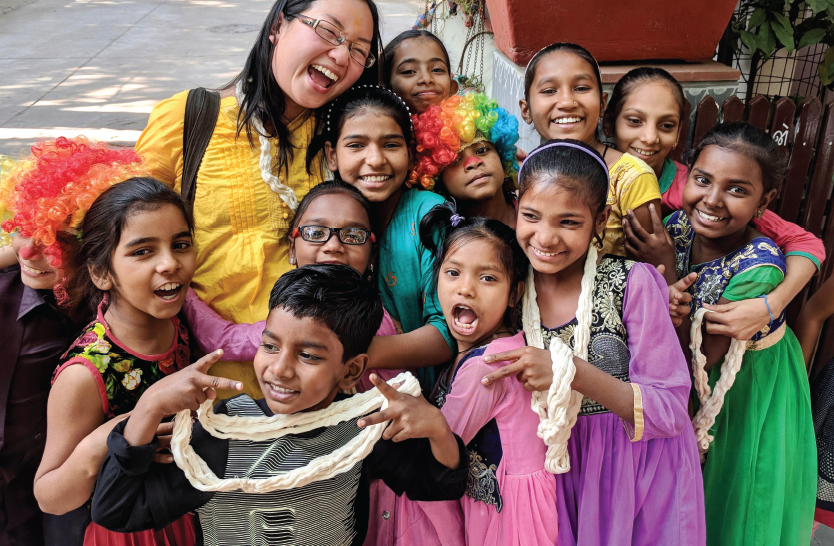
Q: What happens in that dynamic of trust in relationships when people’s innate tendencies and fears surface? And of course they will, because we’re all human. We’re all carrying baggage from the past – culture, family, whatever – and these things arise. How do we deal with it?
NM: That’s why relationships are complicated. Anyone who has been in any relationship will tell you that it’s not so simple. It’s not like I give you five bucks, you give me the food and that’s the end of it. If I’m actually engaging with you in a multidimensional way, that’s going to evoke something – it may trigger me in certain ways. It may be much simpler and more convenient for me to not have that relationship and just engage in a transaction. So then why engage in relationships when it requires so much of me?
Q: This is the critical question, Nipun, because this is at the root of so much that needs to change in our societies globally today. Not just in the West. It’s the same in India, and it’s the same in China. This is the million dollar question.
NM: Yes indeed.
Q: How do we work with relationships? It’s not transactional in the sense that people are not doing something for money, and they’re not even doing something for recognition a lot of the time. The whole ethos of service, seva, is anonymity, humility, the Gandhi values etc. So how do we build this culture of trust without having transactions, without having carrots, if you like?
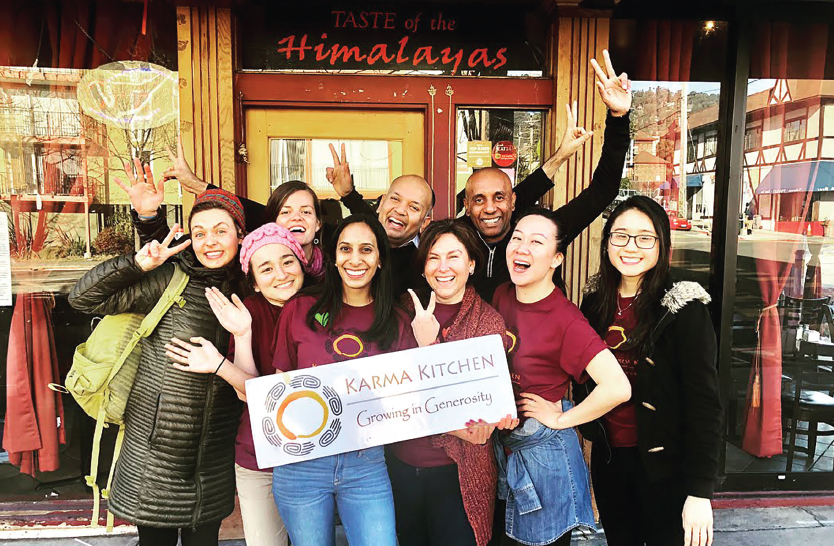
NM: It takes many inner capacities that we need to cultivate. And if we do cultivate those inner capacities, the reward is that we get a high bandwidth engagement with life. So then we may ask: What actually happens when I’m in a relationship and certain parts of the relationship are difficult? And I have to now deal with those difficult parts to get to the high bandwidth engagement with life. I need to grow in equanimity, I need to grow in tolerance, and I need to grow in patience.
It’s much easier in a consumeristic mindset, where we think, “Hey, I want this, I want it now, and I want to get to the next thing.” And if we keep doing it, that consumerism is going to get us to a very cheap engagement with life. So how do we build the virtues that lead to a higher engagement with life? And as we inch towards that high engagement of life, what we understand is that it’s never been between us and the other person in a one-to-one way ever. It’s just that we have reduced it to that.
One of my friends was in San Quentin prison with people who had committed at least one murder. They were in a circle and they were sharing. At one point my friend got a board and asked, “Can you tell me how long you’ve been in jail?” He started writing it down and everyone shared: 20 years, 40 years, 12 years, and so on. He added it up and it was something like 484 years. Then he created another column and asked, “How long was your moment of rage?” 2 minutes, 7 minutes, 40 minutes, 1 minute, and he added it up and said, “In this circle, for a couple of hours of rage we have spent hundreds of years in jail.”
That kind of a mirroring created a very powerful vibe in the room. During the follow-up circle of sharing, one of the guys said, “You know what I think? Hurt people hurt people. A person is never negative to you in a one-to-one sort of way. Just as we pay forward kindness, we also pay forward negativity. We also pay forward selfishness.” So he said, “I hurt somebody because someone hurt me.” The circle continued, and a little bit later another member of the circle said, “I’d like to add to that. Hurt people hurt people, but I think healed people heal people.”
So when we look at relationships and the inconvenience of them,
it is actually an invitation to grow in virtue,
so that we’re able to go from that cheap bandwidth
to a much deeper engagement in a much more multidimensional way.
And if we do that, then in that field so much can grow,
andinturn we can build trust in society.
So who do I have to be when I see somebody harming me? Who do I have to be to hold that whole lineage of conditions and have a big enough heart to say, “I will endure this and rebound it back with compassion.” The reward for that is not just that the other person might be healed in some way, but that you are graced with an incredibly high bandwidth engagement with the present moment.
We saw people like Gandhi do exactly this. Godse put 3 bullets through him, and Gandhi’s response was, “Bless you, bless you, bless you.” He was not condoning the negative action, but rather he was saying, “I oppose the action, but you are much more than that action, and I love you.” That larger ‘you’.
So when we look at relationships and the inconvenience of them, it is actually an invitation to grow in virtue, so that we’re able to go from that cheap bandwidth to a much deeper engagement in a much more multidimensional way.
And if we do that, then in that field so much can grow, and in turn we can build trust in society.
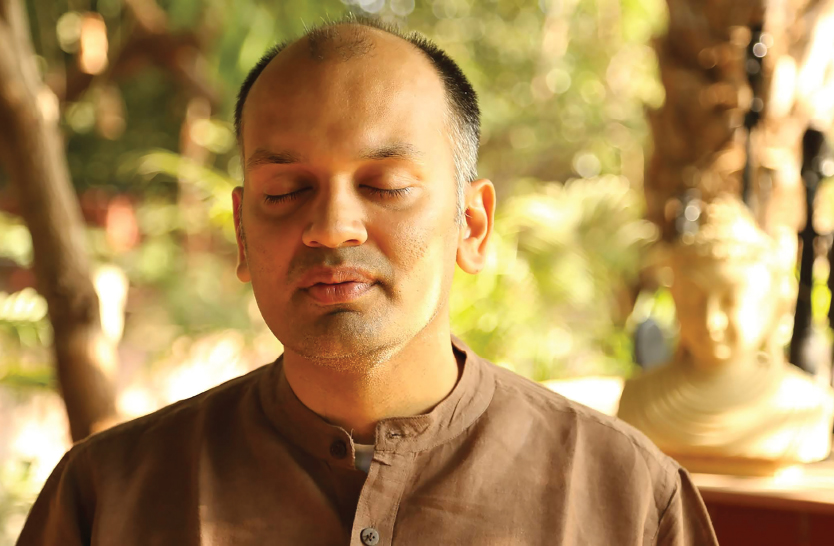
Q: So will this spread, do you think, to all the Afro-American kids who are in prison, all the Latino boys who are in prison? You know there is a lot of cultural divide, even in a wealthy country like the US. And I know there are people like the Greater Good Science team who are trying to address those social issues, because it isn’t an equal playing field either. So who is responsible for this?
NM: You and I! We can’t lose our agency through this process. Even with generosity – we tend to view generosity as a luxury sport. We say, “Look, if you accumulate like me and become very successful, then you can give.” But actually it’s not a luxury sport. Those who have the least end up giving the most.
My wife and I were on a walking pilgrimage in 2005. We ate whatever food was offered and slept wherever place was offered, and those who had absolutely nothing would borrow food to feed us. We are wired to care, we are wired to give, we are wired to be related – and neuroscience now confirms all this. So we know that we want to do this, but we need spaces where we can explore it further. Of course it will take time. This isn’t a quick fix; it’s not going to happen overnight.
As you said, we have a lot of inequities. But fortunately, generosity, compassion, kindness are not reserved for those who have ‘made it’. There is no worthy destination until we arrive at acting with compassion in any moment – even if it’s silent, even if it’s a humble prayer. I have had homeless people on the streets start out by asking me for money, and by the end they offer me money. It’s not that I’m asking for money, but it’s just that they feel a kinship, they feel a brotherhood. And when you feel that brotherhood, you want to serve that brotherhood.
So how do we tap into that kind of agency and trust the ripple effect? This is not going to happen overnight, because the problem was not created overnight. It took a long time. It’s just that we weren’t paying attention when it was drip by drip by drip. We were de-capacitating ourselves drip by drip by drip. And now, drip by drip by drip we have to turn it around.
So if you ask, “What’s the quick fix solution?” I would say there isn’t any. And so you may ask, “Are you still committed to that? Are you committed to spread love, to do that small act of kindness, to plant that tree under whose shade you will never sit, whose blossoming you may never get to witness?” I’m willing to do that. It makes me come alive. I don’t need that immediate feedback loop. So if you and I are willing to step into the space, then I think that’s the start of the revolution.
Q: Right. So what are the projects in your revolution at the moment? What’s happening and what’s going to happen? What’s your vision?
NM: So ServiceSpace is an incubator of many different projects. We have some that are online, like DailyGood and KarmaTube. These projects create online communities, spread inspiration. Some are offline, like Awakin Circles and Karma Kitchen. Some are in-between, like KindSpring, home of the Smile Cards, that create an online community, where people share stories, but the Smile Card act is actually in person, in offline space.
We have been creating this ecology of many different projects. But what binds all of them together is not the projects but the process. That process, for the entire ServiceSpace ecosystem, includes an alignment with three basic building blocks:
1) The first principle is that we’re volunteer run. When no one is paid, we are driven entirely by intrinsic motivations. Initially, that sounds cute, when you’re starting and you say, “We’re five volunteers.” But when you’re 500,000, the field of intelligence, that field of purely intrinsically motivated intelligence, is just profoundly different in its patterns of innovation.
2) The second principle is that we work with what we have. Not seeking or scheming. And the way it manifests concretely is that we never fundraise. We just say, “This is what we have,” so we work with what we have, which forces us to look at multiple forms of capital. We’re no longer only thinking that money equals wealth; that is, we don’t think without money we can’t do anything. Quite the opposite. Money is one form of capital, but so is time, so is attention, so is technology, so are stories, cultures and so on. Our creative constraint invites us to engage with other forms of capital.
3) The third principle is that we focus on small, which means that we never say, “Go out and try to change the world.” We never design for that threshold of impact. And when you’re small, the onus is on you to be the change. You can’t say, “Oh, I’m trying to change this in this person.” You say, “Oh, am I being the change?” And if I’m being the change, am I growing in equanimity? Am I growing in tolerance? Am I growing in patience? Am I growing in compassion, generosity, and kindness? Am I manifesting that in every relationship? And am I then trusting the ripple effect of that, as opposed to trusting the ripple effect of the might of one’s organization?
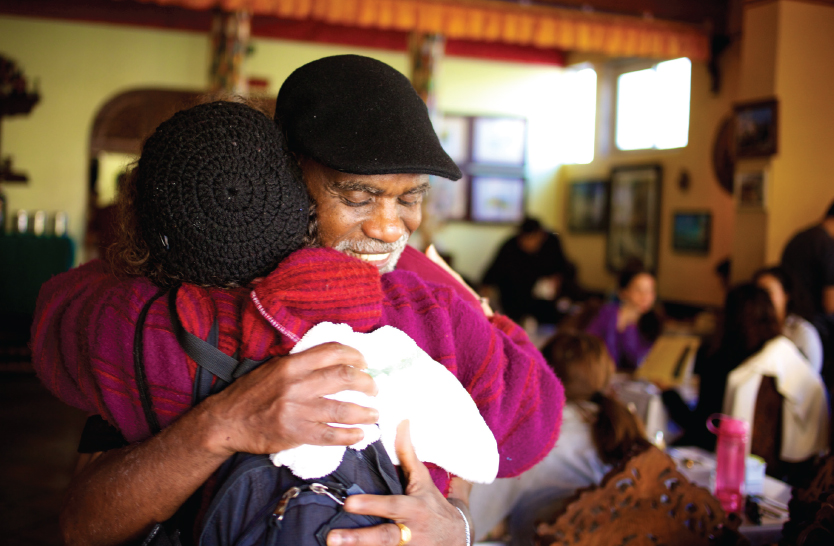
So these creative constraints are what encompass the whole ServiceSpace ecosystem. So we have many projects, doing so many things and touching millions of people on a regular basis, but underneath them, the way I parse it is that it’s actually about the process underneath, which are these core values.
Now, looking at the field, what is emerging right now?
One thing that has recently emerged is this idea of a Laddership Circle. We talk about leadership, which is command and control, whereas laddership is about being in the back of the room, tuning into the myriad relationships that make up that community. And you change an ecosystem not by power, not by control, not by force and coercion, but actually by nudges, predicated on your capacity to know the interrelationships between everybody.
For example, look at the way acupuncture works. If I have a neck ache, the acupuncturist may place a little pin on my arm – because the knee is connected to so many other parts and it creates this ripple effect that heals my neck. Similarly, we do that in a social context. It works in the same way, and it’s far less violent than other options.
Then, the question is – how can we create a whole context, especially for young people, to hold all this, not as a leader, not as somebody who is mighty and centralized, but as a decentralized ecology that you hold with this kind of a heart? And that’s not something that is taught, and we don’t explore it. So we’ve started these Laddership Circles, which have been remarkable. We just had a Nobel Peace Laureate who joined one of these circles. They are peer-learning circles, so one person doesn’t teach another person. There are small groups of 6 to 8 folks, with 2 or 3 anchors who are just holding space on the side. And you’d be amazed how much we can learn from each other if get out of that hierarchical mindset.
How do you create a whole context,
especially for young people,
to hold all this, not as a leader,
not as somebody who is mighty and centralized,
but as a decentralized ecology that
you hold with this kind of a heart?
Q: So it’s an enabling model.
NM: It’s a model for growth. It’s not a manufacturing model but a gardening model. It’s something that’s emergent.
Another project, which isn’t released yet, but which I’m excited about, is actually creating an eBay-like space, where you can pay not just with financial capital but also with other forms of capital. So I knitted this beanie for the love of it, because I enjoy knitting. Now you may be able to pay and maybe I need to get some money out of it. But I may also be happy if you go out and do an act of kindness and share the story with me. Or if you donate money to another NGO and send me the receipt. Or if you meditate for an hour and send me a reflection. We all know we value these actions, but we have never connected people in that sort of a way. And why not?
So I’m very excited about this idea. There was a monk who came out with a CD, and he came to us and we were talking about how he was going to distribute it. We said, “You know, instead of just putting a price tag and doing the regular kind of distribution, why don’t you give people the option to also do an act of kindness and send you the story?” And hundreds of people sent stories! Can you imagine being a producer of value, in that sense, and receiving payment in alternate forms of wealth? Sure, I am not denying the power of financial capital. We all need money to pay our rent and pay our bills and things like that. But at the same time we can’t just blindly be focused on it. We can’t discount the immensity of other forms of capital that satisfy us, that nourish us, and that actually are regenerative, that nourish the person who gives, that nourish the person who receives. So how do we create a platform to facilitate these kinds of connections in a many-to-many sort of a way? I am excited about that.
Q: That’s a real gifting ecosystem.
NM: Yes. And isn’t it amazing that we have all these innovations and technologies and we don’t think about alternate capitals? It’s almost like back in the days when NBC, CBS, and other centralized TV stations were there doing the work, but none of them could come up with a YouTube, because they were so entrenched in that worldview.
Similarly, I think that this is the time when spiritual people really need to get active, and active people get spiritual. We’re in a time when that kind of intelligence needs to arise. The innovation that came from YouTube dis-intermediated the NBC's of the world, and we saw it happen across the board: CDs turned into iTunes, billboards turned into Google AdWords. But now how do we bring these spiritual qualities into greater circulation, leveraging modern technologies and their new possibilities? And I think that’s the potential of our times and the need of our times. If we don’t do that we are going to continue to strip down of what it means to be alive.
Q: And if we do do it?
NM: If we do do it, then I think we’ll have a higher engagement with life and a lot of virtue will grow in the field of our relationships, of our deep relationships. And I’d rather see that kind of a world.
Q: Thank you.
Posted by Vasco Gaspar on Mar 13, 2019



On Mar 14, 2019 Victor Kannan wrote:
Post Your Reply